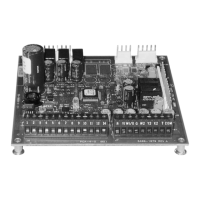RT-SVD03G-EN 101
ReliaTel Economizer Operation
Power Exhaust
Exhaust fans offer improved performance since they can be sized to overcome the pressure drops
associated with the return duct that would otherwise add to the space pressure. This function
allows the exhaust fan to operate when appropriate to maintain space pressure.
Units without RTOM: The power exhaust is on whenever the economizer damper is at 25%
outside air or greater. This is not adjustable. The power exhaust is off whenever the economizer
damper is below 15%. This is not adjustable.
Units with RTOM: The power exhaust set point (point at which the power exhaust is turned on)
is adjustable from 0% to 100% at the RTOM “exhaust setpoint” potentiometer. The power exhaust
will be off when the economizer damper falls below the Power Exhaust Setpoint - 10%.
Economizer Control Methods
Three different methods can be used to determine if outdoor air contains more cooling capacity
than the return air and are described below. The different methods are suited for different
applications and environments.
• Comparative Enthalpy — Outdoor Air Enthalpy is compared with Return Air Enthalpy. This
method is best suited for high humidity climates and applications in which humidity can affect
the cooling capacity of the outdoor air or return air.
• Reference Enthalpy — Outdoor Air Enthalpy is compared with a reference enthalpy point. This
method is best suited for high humidity climates in which humidity can affect the cooling
capacity of the outdoor air, but not necessarily the return air.
• Reference Dry Bulb— Outdoor Air Temperature is compared with a user set reference
temperature. This method is best suited for low humidity climates and applications in which
humidity does not strongly affect cooling capacity of the outdoor air or return air.
Dry bulb temperature and relative humidity data are used to determine enthalpy.
Economizer-based cooling is enabled only when outdoor air is determined to have more cooling
capacity than the return air. The method used is according to the available data. When temperature
and humidity data are available for the outdoor air and return air, the Comparative Enthalpy
method is used. One of the other methods are used if data is invalid or unavailable. Ultimately,
when there is insufficient data to use any of the three methods, economizer-based cooling is
disabled.
Thermostat Notes
When the Active Unit Mode is Cool, one of the enthalpy or temperature methods are used to
determine if economizer-based cooling should be enabled or disabled.
If the unit is applied with a thermostat, the algorithms use a fixed mixed air temperature setpoint
of 53°±3° when the Y1 input is closed. If the unit is applied with a zone sensor, the algorithms use
a dynamically calculated mixed air temperature setpoint, which is calculated by other algorithms,
when cooling is requested.
The damper can be in four different states.
• Closed — The damper is held at 0%.
• Minimum Position — The damper is held at the Minimum Position as determined by the
Minimum Position Potentiometer on the ECA or by an edited input from ICS. This position is
between 0% and 50%.
Note: When making minimum position adjustments, allow 30-45 seconds for actuator to respond.
• Modulating — Algorithms control the damper to meet cooling demand. When modulating, the
damper’s range of motion is between Active Minimum Position and 100%.

